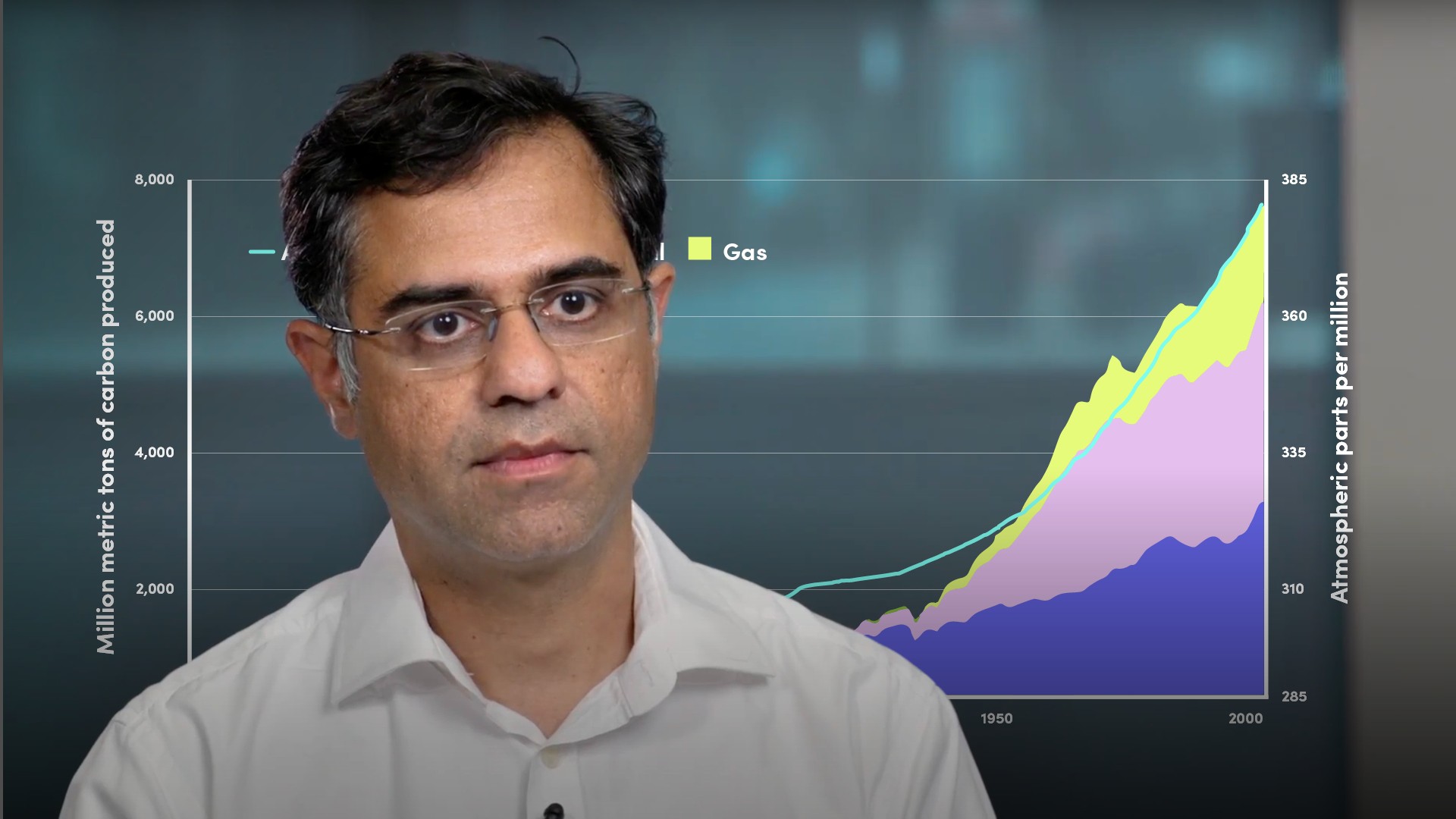
The Physical Risks of Climate Change

Amit Kara
30 years: Macroeconomist
In this video, Amit explores the impact of the physical damage of climate change on the macroeconomic economy and stresses the importance of intervening with the correct policy response. Without this, the impact of climate change will spread and intensify.
In this video, Amit explores the impact of the physical damage of climate change on the macroeconomic economy and stresses the importance of intervening with the correct policy response. Without this, the impact of climate change will spread and intensify.

The Physical Risks of Climate Change
12 mins 26 secs
Key learning objectives:
Understand the existing evidence we have for climate change
Identify the ways in which we can address climate change
Understand the impact of the physical damage of climate change on the economy
Overview:
It is clear that there is a direct link between global warming and climate change. Scientists have overwhelming evidence to warn us about irreversible physical damage if this is ignored. Consequently, it is urgent to respond quickly before it is too late.
What is climate change?
Climate change refers to a long-term and large-scale shift in weather patterns and to changes in average temperatures. It is important to note that climate change refers to weather changes which are persistent and long lasting.
What are the potential impacts of climate change?
- Leads to more extreme weather events
- Shifting monsoons
- A destruction to the ecosystem
- Rising sea levels
What evidence do we have for global warming?
- It is now a well-established fact that the earth is getting warmer and that the sea level is rising. According to the chart in the video, the average surface temperature of the planet has risen by around 1°C since the early-20th century and that most of this warming has occurred in the last 35 years with a sharp spike in the past decade.
- Scientists have also shown that the surface temperature of the oceans has increased, and that, in turn, has contributed to a rise in sea levels. They expect the sea level to rise somewhere between 1 to 8 feet by 2100. This will threaten low lying islands and cause storm surges and tides that will lead to flooding.
- The snow cover in the northern hemisphere has reduced, glaciers and polar ice sheets have decreased and they continue to decrease at an alarming speed.
Why do people often dismiss climate change?
Often people dismiss climate change effects on the basis that the earth’s climate has been changing throughout its history and that human beings are ingenious and will adapt to whatever comes their way.
What will likely occur if climate change is ignored?
If this trend is ignored and we continue to do nothing, the global temperature will rise by around 5°C in a much shorter timeframe than we are prepared for. The impact on the climate of this type of temperature increase is likely to change the physical geography of the earth, making some parts of the world inhospitable, leading to mass migration.
Why is the temperature rising so quickly?
Early science clearly established that the earth’s atmosphere is like a warm blanket - it traps heat, so much so that without the atmospheric blanket, the planet’s temperature would be around 30°C lower.
Researchers established that higher concentrations of greenhouse gases in the atmosphere will lead to higher global temperatures. For example CO2 levels and water vapour helped trap that heat. According to the chart in the video, atmospheric CO2 concentration was between 200-300 parts per million up until 1950, and has now risen to above 400 parts per million. Other gasses such as methane and nitrous oxide are culprits as well.
Why have CO2 and other greenhouse gas concentrations risen so aggressively?
Human activity is by far the most likely source of excess greenhouse gas emissions.
- CO2 levels have risen by about ⅓ since the industrial revolution and much of this is from burning fossil fuels and deforestation
- Nitrous oxide, another greenhouse gas, is generated by the burning of fossil fuels and through the use of fertilisers
- Methane is generated by the decomposition of waste and ruminant digestion
What existing evidence do we have for climate change?
- Excess greenhouse gasses leads to global warming
- Atmospheric greenhouse gas concentrations have risen
- Human activity is the primary cause of excess greenhouse gas emissions
- Higher concentrations of greenhouse gases will lead to climate change
In what way can we address climate change?
It is clear that those responsible for the emissions are not necessarily those that will pay, and those that are at the sharp end of the adverse impact of climate change have not caused the damage. Hence, human activity causes a negative externality. Identifying and addressing that externality is a key challenge for policymakers.

Amit Kara
There are no available Videos from "Amit Kara"

